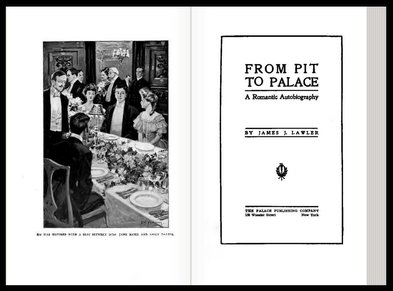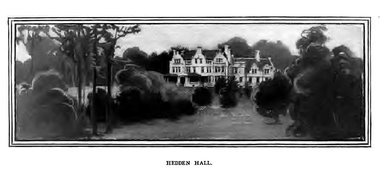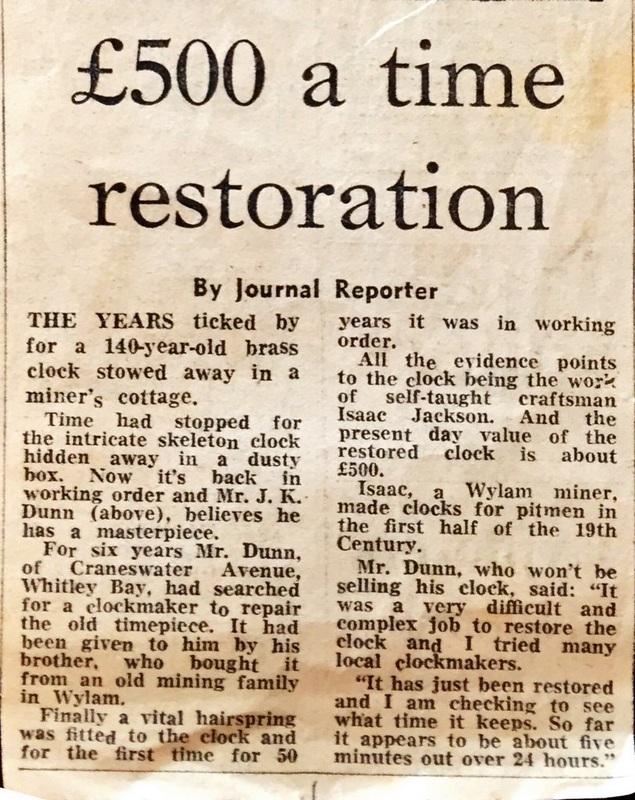Many biographies have been written of successful men who began life under the poorest conditions and while this sketch, which consists of more facts than fiction, might appear like repeating an old story ...
|
From Pit to Palace: A Romantic Autobiography by James J Lawler. The Palace Publishing Company, New York (1906). Just came across this strange book. It can be read or downloaded on the Internet Archive website. It's subtitle is 'A Romantic Autobiography' and is set in Wylam and Heddon on the Wall. It may well be an autobiography of the author, James J Lawler, but then why is the hero of the story called James Raymond? I can find neither of these named individuals in local records. The author's preface only provides this clue (the emphasis is mine): Although many recognisable events, descriptions and named people do occur in the book there are also many errors. They could of course be put down to a poor memory of past events and places. There is also much that smacks of fabrication and a huge desire to set the hero in the best possible light. If it is an autobiography it is certainly high on the big-headed side and there is little modesty.
0 Comments
Thanks to Philip Campo who contacted me about the blog, Canny Wylam, I have been able to see two examples of skeletal clocks made by the Wylam clock-maker, Isaac Jackson. By any chance was 'the clock te gan forever' a skeletal clock? If so, I can certainly point you as to the whereabouts. My grandfather was a lover of skeletal clocks....and 2 of Isaac's pieces are within our family. One of the clocks originally came from Wylam Church. My Grandfather had it agreed with the church for £200 back in the 80s, however the church decided to auction it instead and I believe he ended up paying more like £1500 at Christies auction rooms. This clock has a globe in the centre and rotates as the day goes by.....no doubt to the turn of the earth as I'm sure Isaac wouldn't have it any other way. I also have to thank Philip Campo for the copy below of a local newpaper article recording the clock's restoration. One of Jackson's clocks was for a time in Ovingham as it is mentioned in an article about the village in Archaeologia Aeliana, v5 p.347 (1861): "These bring us into modem times; and we may venture to note the pleasure with which we view Mr. Bigge's admirable specimen of the clocks manufactured by a neighbouring pitman, Isaac Jackson, of Wylam. It is a marvel of accuracy." John Frederic Bigge (1814–1885, 6th son of Charles William Bigge, Esq of Linden, Northumberland) was vicar of Ovingham & later Stamfordham. The Jackson clock mentioned in the report was presumably in the Ovingham Rectory. A photo of the long-case regulator clock made by Isaac Jackson for Robert Stephenson's Locomotive Works in 1858 and now in the National Railway Museum is shown in Tale of the Model Steam Locomotive at Close House. UPDATE 20/11/2023
Pendulum Publications Isaac Jackson of Wylam - Miner, Musician, Mechanic and Clockmaker. Contacts made through the website are always appreciated, often informing me of things I don't know, or setting me off on a new train of thought. A lady called Lynne Petrie contacted me recently through a mutual friend in Wylam regarding the blog I'd written about Isaac Jackson, made after the talk by Jim Rees for this year's Puffing Billy Festival. She asked if I knew the Geordie folk song, 'Canny Wylam', which mentions Jackson and other notable, and not so notable, worthies from our neighboring village. After a mention of George Stephenson, the verse about Jackson goes: Now there's Jackson, his owld mate, was another up te date, The illustration (above) for this story was kindly provided by Bethany Whitehead especially for this blog. Her work is showcased on Tumblr as Bethany Bluebell Illustration and is well worth a look. The series of talks on early railways set up for the 2013 Puffing Billy Festival has been both informative and entertaining. However, the one on 25th September by Jim Rees entitled Hedley, Chapman and Isaac Jackson - who really did what? provided a gem of a story with a local interest that I just had to follow up. Unlike my recent blog, Puffing Billy & the Heddon Balloon, where my early railway connection with Close House was somewhat fanciful, this story incorporates both real old news reports and cutting-edge research. That account also has one of Bethany Whitehead's drawings. It's worth pointing out here that Close House always was, and still is, firmly in the parish of Heddon on the Wall, but is often referred to in the press as Close House, near Wylam, or worse, Wylam's Close House. This fact was pointed out in a letter to the Hexham Courant by Ian Armstrong, Chairman of Heddon Parish Council, published Monday, 1st October 2012. I would like to thank Jim Rees (now at Beamish Museum) for providing much of the information I have used below. It was published in Early Railways 4 (Ed. G Boyes, 2010; ER4) as a followup section to his paper, The Sans Pareil Model: its purpose and possible origins, read at the Fourth International Early Railways Conference. The field of early railway research is a complicated and confusing one and any mistakes in the report below are my own, due both to my poor note keeping during Jim's lecture, and my even worse understanding of the issues and engineering. Among the many things I learned in this talk, completely new to me, was about another Wylam man, Isaac Jackson, and his possible, mostly unsung, role in assisting in the local development of early steam locomotives that was taking place around him.
|
AuthorAndy Curtis Archives
April 2024
Categories
All
|










 RSS Feed
RSS Feed
